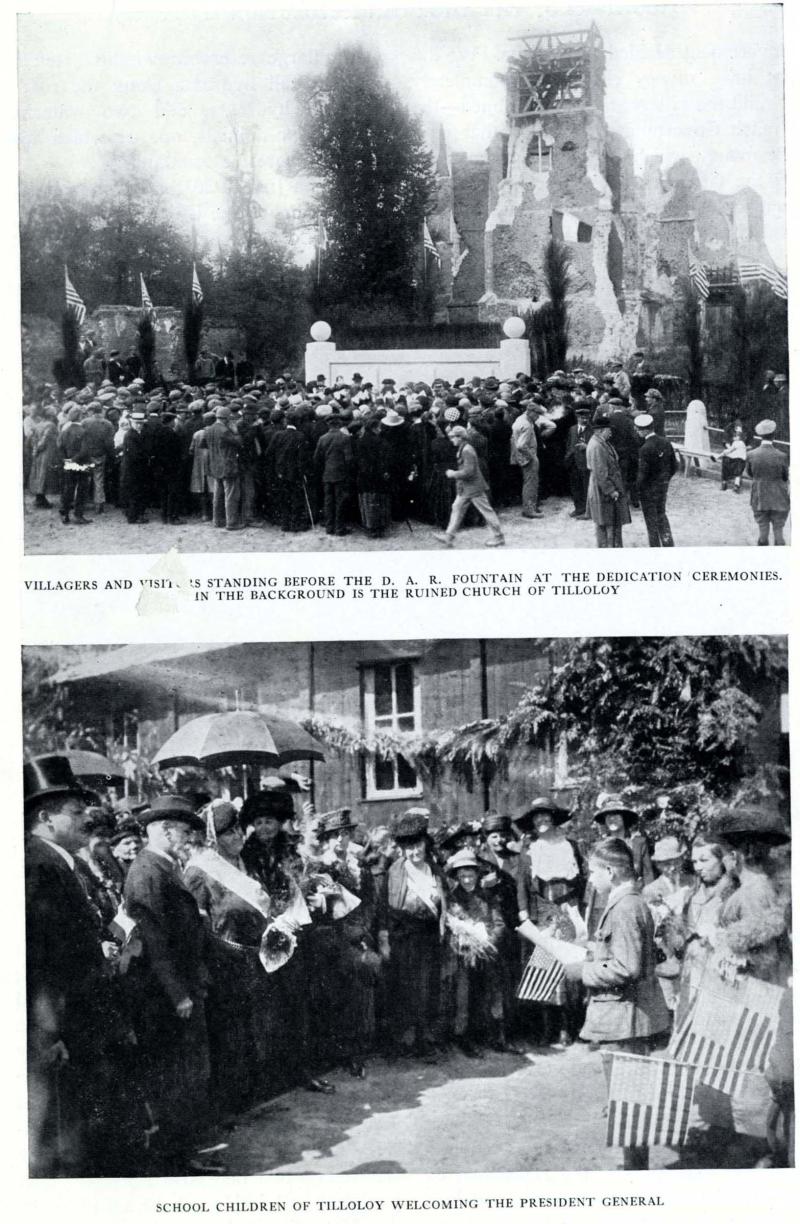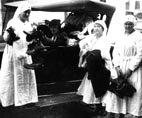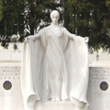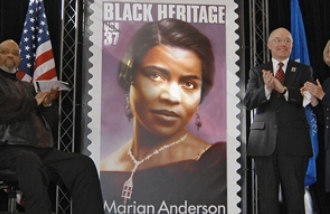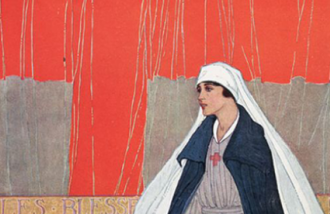When the United States officially entered World War One in April of 1917, the DAR quickly organized to meet the challenges of war. Ten days after war was declared, the DAR met at their annual Continental Congress. Members recognized the need for a special committee to coordinate relief work and established the War Relief Service Committee. The committee helped DAR members organize their volunteer efforts, which ranged from knitting garments for soldiers and training for food conservation. Many DAR members were also nurses serving in World War One, including Jane A. Delano who organized the Red Cross Nursing Service during World War One. Additionally, after the war DAR members continued to support initiatives to help those suffering from the devastation in European towns after the war.
Learn about just a few of the many support efforts of the DAR during World War One from this slideshow.
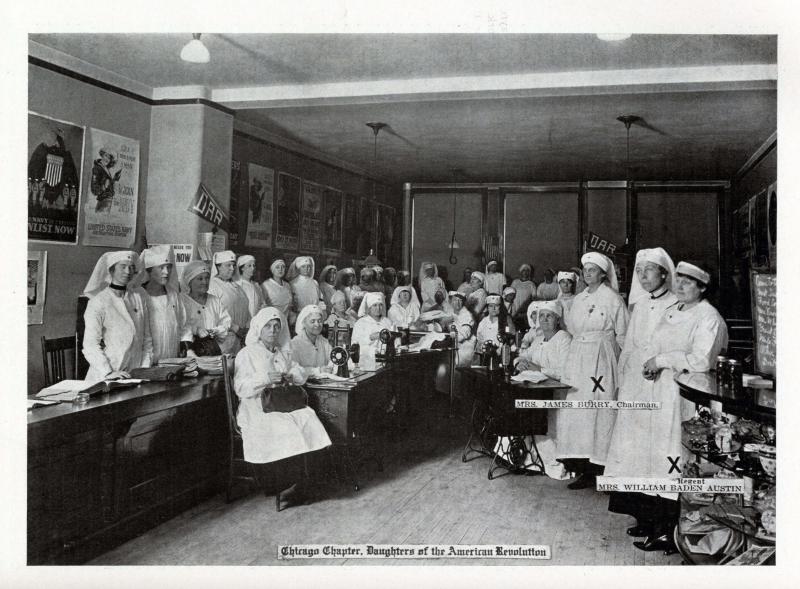
Clara Hadley Wait served as the Publicity Directory of the DAR War Relief Service Committee. She is photographed here (right) in her Navy League uniform.
Wait was pivotal in organizing DAR’s volunteer involvement and support of World War One efforts. In 1921 the French government awarded her the Medaille de la Reconnaissance Francaise for her service.
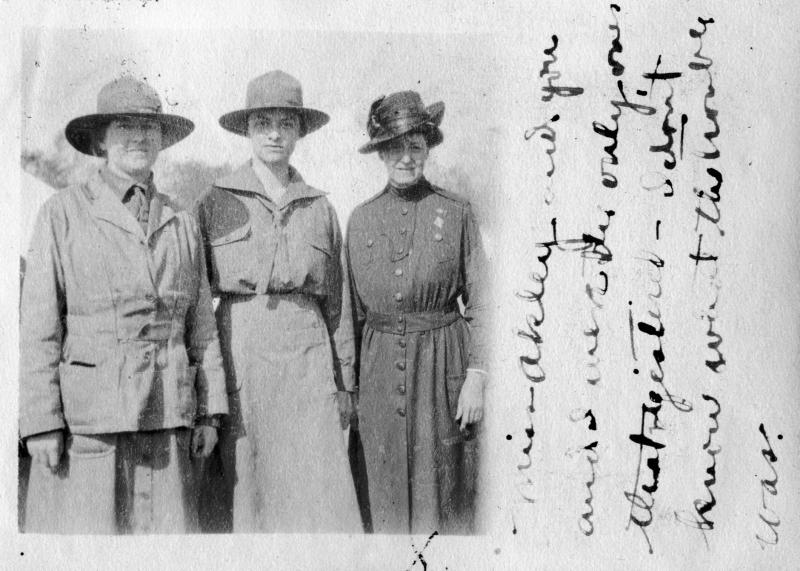
During World War One, the War Relief Service Committee published a series of bulletins informing the DAR membership on various ways they could serve the cause.
Bulletin number 12 dated April 29, 1917, was one of the most widely circulated bulletins. This bulletin asks DAR members to bring brightness into the lives of families of soldiers and sailors serving on the front, by, “making it a part of her service to her country to bring happy little surprises, unexpected pleasures into the lives of these sorely-tried women and children, thus giving them something bright, something cheering, something happy to write about to ‘him.’"
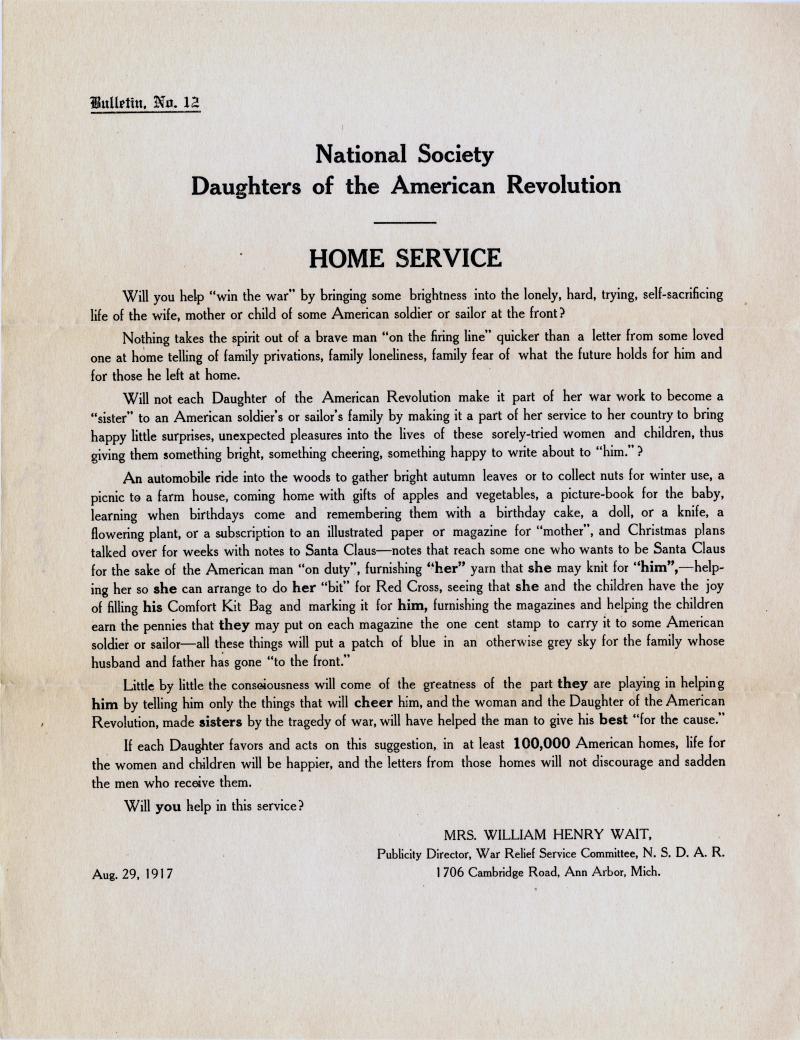
This September 12, 1914, photograph shows DAR Member Jane A. Delano (front row, center) and a group of nurses preparing to sail to Europe on the S.S. Red Cross.
Delano was central to organizing the Red Cross Nursing Service and under her leadership more than 20,000 Red Cross nurses served in World War One.
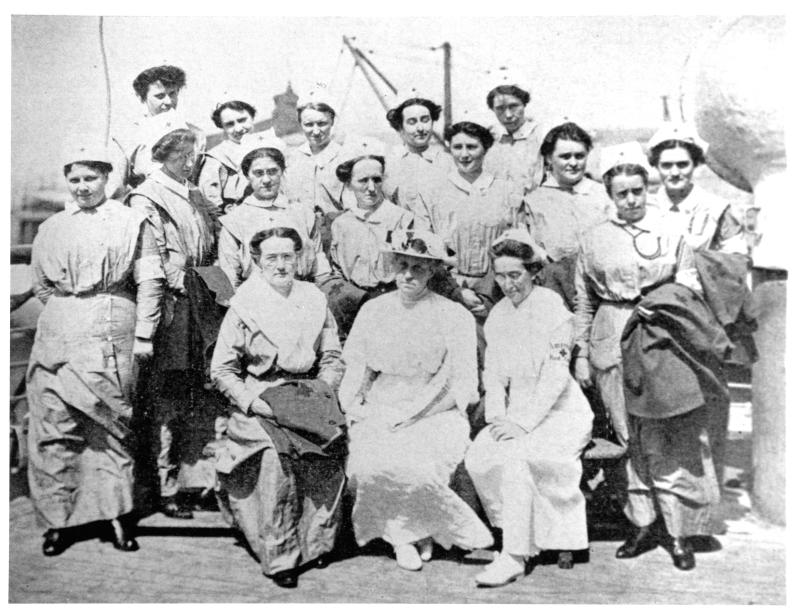
This course list documents food conservation education during World War One.
When America entered the war in 1917, our allies in Europe had already been at war for three years. Farmers were now soldiers and farmland had been transformed to battlefields, consequently Europe was facing starvation.
Food conservation was viewed as one of the many patriotic ways women could aid the war efforts. In order to supply soldiers with the nourishment to win the war, American women voluntarily reduced their intake of staples such as meat, sugar, and wheat.
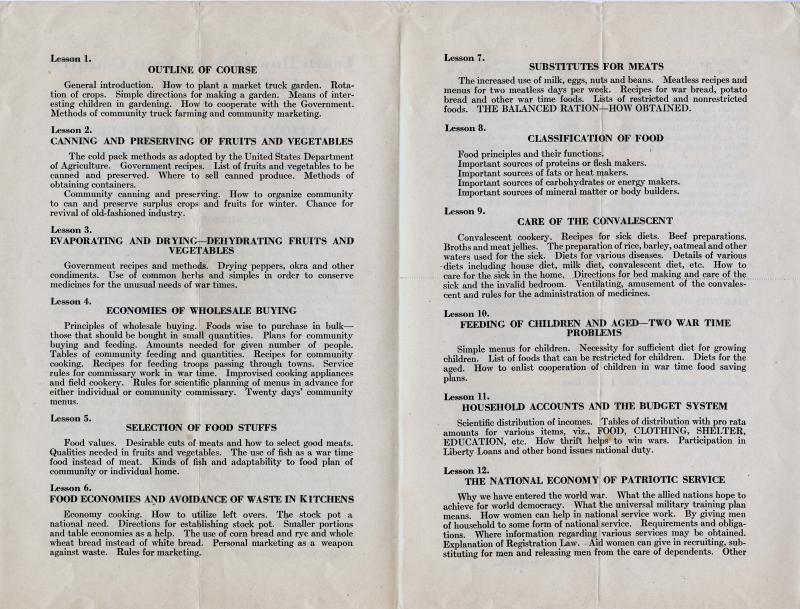
This April 1918 photograph shows the Letitia Green Stevenson Chapter knitting and sewing on the behalf of the Red Cross.
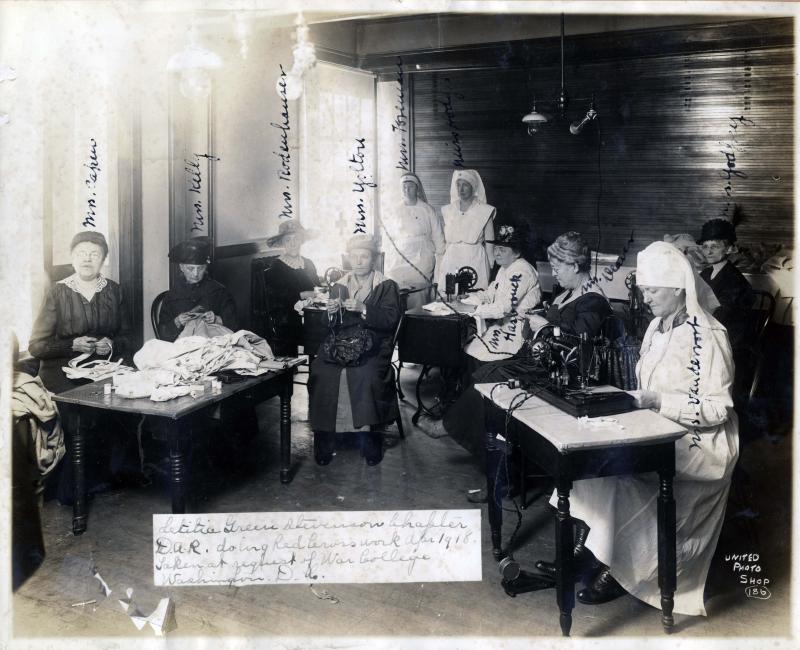
This document gives instructions for knitting helmets and sleeveless vests.
During World War One, everyone was encouraged to “do their bit” and many DAR members aided the effort by knitting items for soldiers. Often women knitted in groups, as seen in the photographs of the Letitia Green Stevenson Chapter and the Natchez Chapter.

This photograph appeared in the January 1919 issue of the DAR Magazine. The March 1918 photograph depicts women from the Natchez Chapter wearing Red Cross uniforms and knitting items for World War One soldiers.
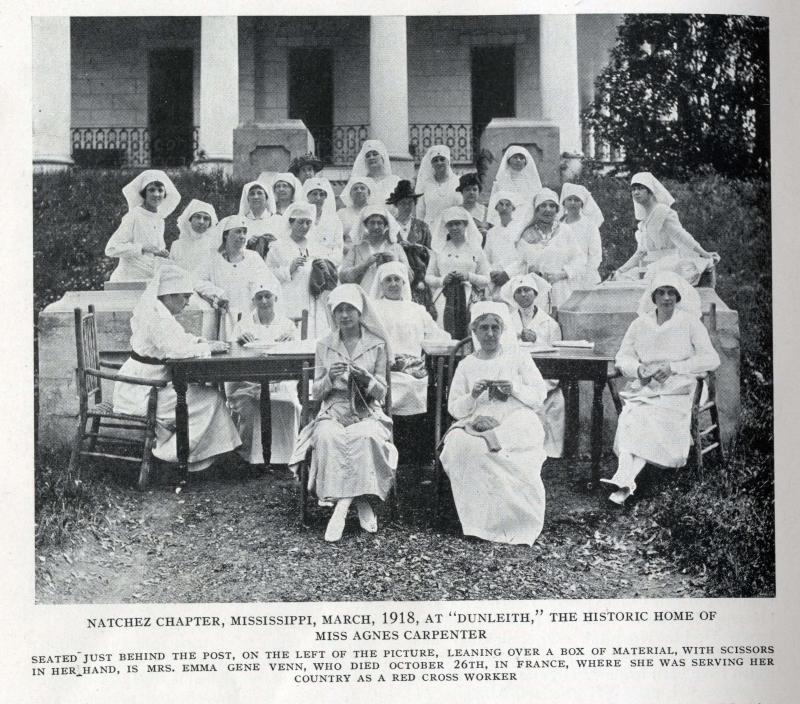
During World War One, the War Relief Committee published a series of bulletins informing the DAR membership on various ways they could serve the cause.
Bulletin number 25 (a) explains the process of sponsoring French war orphans. DAR members could sponsor a child that had lost their father during the war for $36.50. The children were not sent to American homes, as the Bulletin states, “the future of France depends upon keeping them in that country.”
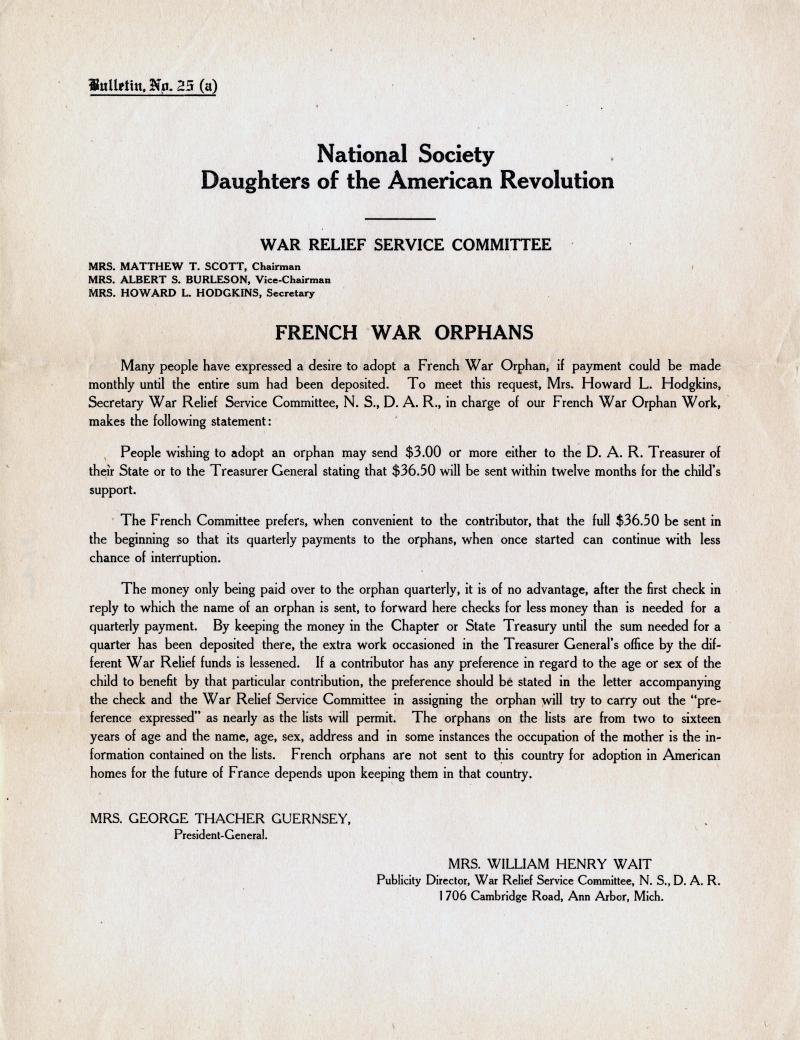
This photograph shows two French war orphans that were sponsored by the Fanieul Hall Chapter, Massachusetts.
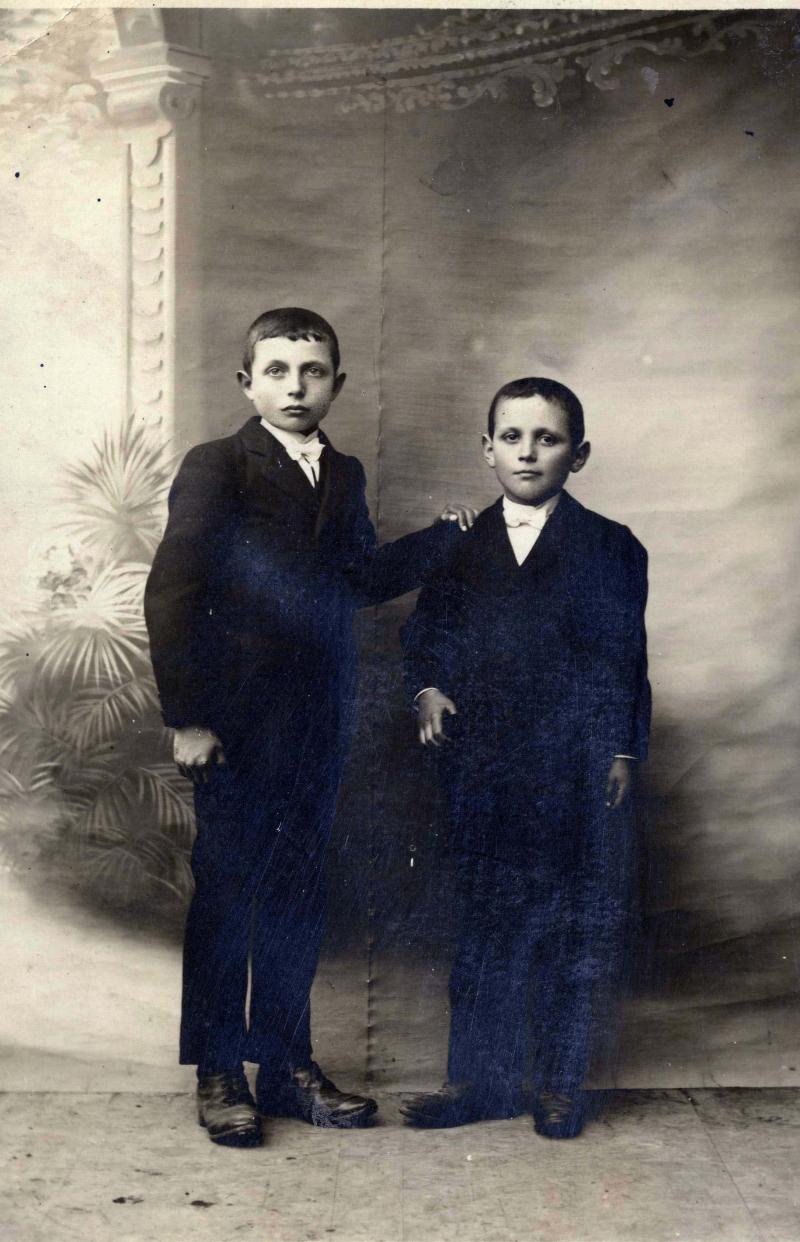
The “I have a chicken in France” pin corresponds with a program that rechickenized France after the devastation of World War One.
The program was a national program that was organized by the American Committee for Devastated France and the DAR’s War Relief Services Committee participated in this program. Participants donated a dime for an incubated egg and a quarter for a chicken and received the chicken pin.
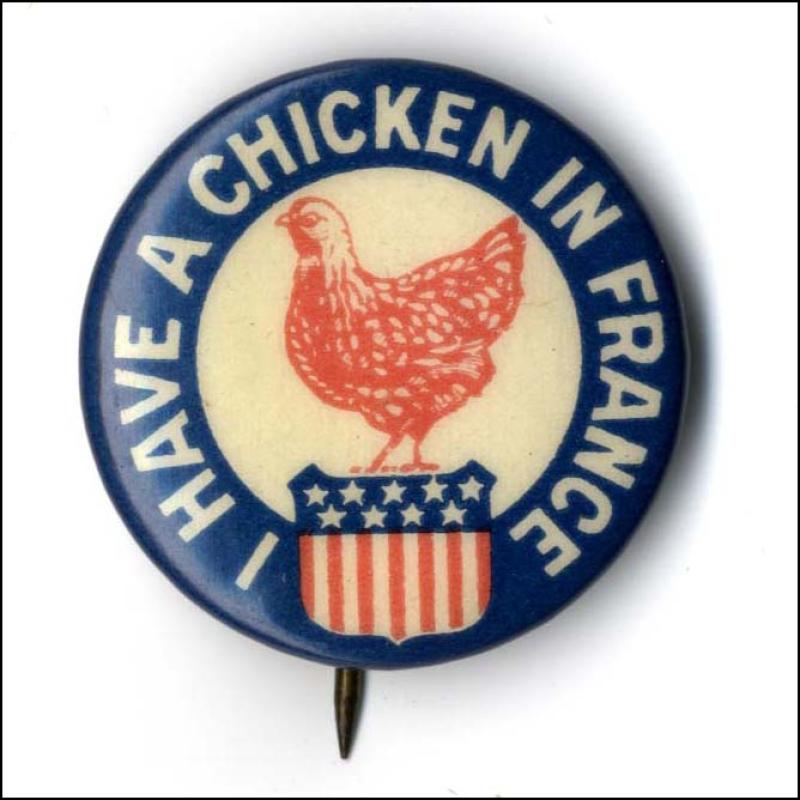
The DAR raised funds to restore the small town of Tilloloy, France, which was destroyed by heavy fighting.
President General Sarah Guernsey visited Tilloloy in 1919 to see the rebuilt infrastructure, newly constructed homes, and the water system built with $130,000 raised by the DAR.
